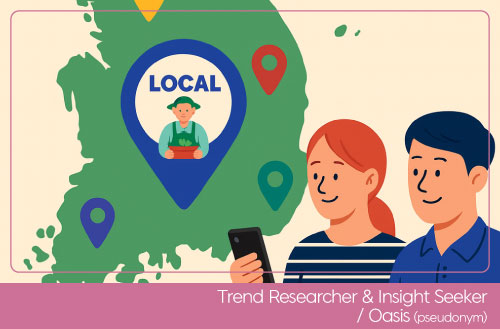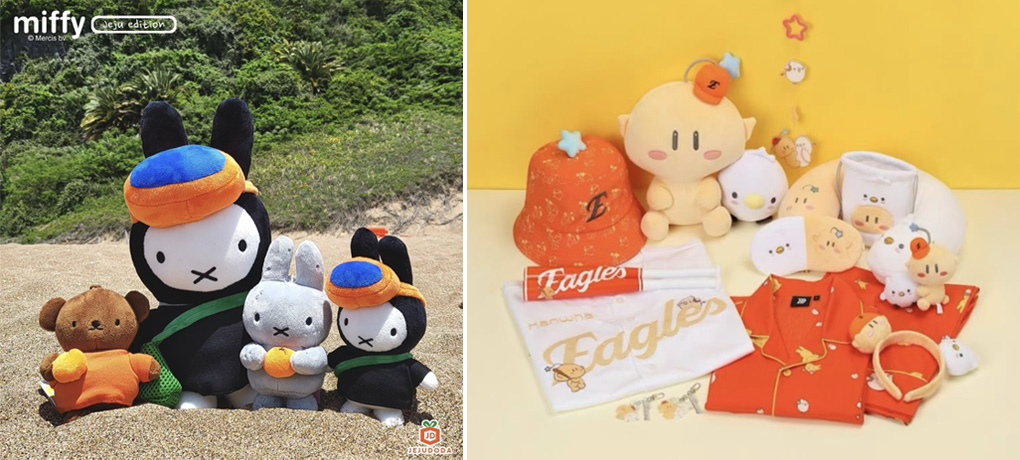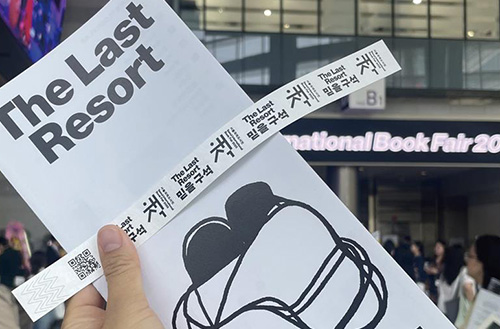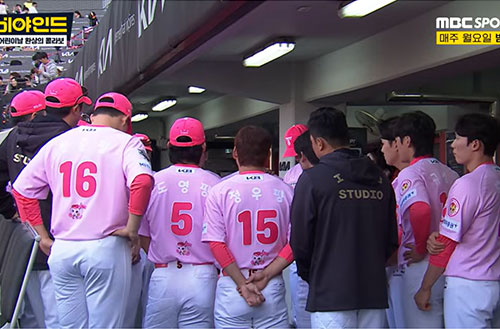


Columnist Oasis
Editor's note
Oasis is part of Amorepacific’s R&I Center, providing creative inspiration for innovative product development across Amorepacific. In offline spaces, we introduce new trends monthly, while online, we share various insights with members, including trends for Millennials and Gen Z, as well as beauty reports. We started this column because we wanted to connect beyond beauty—sharing what our customers truly love.
#INTRO
Have you heard of loconomy? Loconomy—a blend of “local” and “economy”—refers to economic activities that create mutual prosperity with local communities. Whether you’re buying products made with regional specialties or participating in local festivals, you’re taking part in the loconomy. In 2025, loconomy has emerged as one of the defining new trends. Today, let’s explore this fascinating shift.
1 Brands Are Taking Notice of Loconomy
This past July, McDonald’s launched the ‘Iksan Sweet Potato Mozzarella Burger,’ which became a nationwide hit, selling a million units in just nine days. The ‘Iksan Sweet Potato Mozzarella Burger’ exemplifies the loconomy trend. Since 2020, McDonald’s has been consistently introducing localized menu items under the “Tastes of Korea” series, featuring domestic ingredients. By using high-quality local ingredients, the company supports regional farms while leveraging regional names in their menu branding to strengthen brand appeal.
Beyond Iksan’s Sweet Potato Mozzarella Burger, the Tastes of Korea series has won customers over with items such as the ‘Changnyeong Garlic Burger’ and the ‘Boseong Green Tea Pork Burger.’ You might have tried one of them yourself. Alongside the success of the “Tastes of Korea” series, McDonald’s achieved three consecutive years of over 1 trillion won in total sales, including franchises.
HANYUL is another brand embracing the loconomy movement. Their beloved ‘YUJA’ Line features yuzu from Goheung, South Jeolla Province, Korea, with a refreshingly citrusy fragrance. The brand has also enhanced its appeal by partnering with local farms and incorporating various regional specialties, such as Yeoju red rice. Using regional names helps make the products more memorable.

Source: (Left) McDonald’s
/ (Right) HANYUL Official Website Product Page
2 Characters Join the Loconomy Too
Brands are launching products that capture each region’s unique atmosphere and character—products you can only experience “in that you can experience only in that specific place.” The most familiar example is Starbucks. Beverages like ‘Bijarim Reserve Cold Brew’ and ‘Hallabong Cheonhyehyang Blended,’ available exclusively in Jeju, are prime examples.
But these days, character brands are taking an even more active approach to loconomy.

Source: (Left) Jejudoda Instagram / (Right) Daejeon City
1) Miffy Local Editions
‘Miffy,’ the adorable Dutch rabbit character, has been releasing limited editions that capture the distinct character of different Korean regions. Miffy’s first edition featured a Jeju theme. As soon as Miffy and friends appeared, transformed into dol hareubang (traditional stone guardians) and haenyeo (women divers), they became instant hits online.
The key to this collaboration is that you can only purchase these items at offline stores in each featured region. It’s an excellent example of loconomy that stimulates the desire to visit specific places. Following the Jeju edition, Miffy transformed into Gyeongju’s Seokguram Grotto and a merchant at Busan’s Jagalchi Market, building anticipation for what’s coming next.
Content that leverages regional characteristics is also flourishing within local communities.
2) Kkumdori’s City: Daejeon
Do you remember Kkumdori, the mascot of the 1993 Daejeon Expo? I had a Kkumdori figurine at home as a kid, and there’s still a photo of me with Kkumdori at the Daejeon Expo in my family album.
This character from our memories has recently been making a comeback. The Daejeon Tourism Organization revived Kkumdori to align with the retro trend. They expanded the universe by introducing Kkumdori’s family and friends as the Kkumssi Family and have been uploading Kkumdori content on YouTube.
They’ve also partnered with the popular baseball team, the Hanwha Eagles, to release Kkumdori uniforms, spreading the perception that “Daejeon is Kkumdori’s City.” It’s a perfect example of how loconomy, when paired with the retro trend, can create an even more powerful collaboration.
3 Local Festivals Aren’t Old-Fashioned Anymore
What about regions without characters? One solution is ‘local festivals.’ While they once had a somewhat stuffy reputation, they are now so hip that getting in can be difficult.
According to Shinhan Card’s big data research, mentions of local festivals in festival-related searches increased from 15% in 2022 to 19% in 2024. Behind this shift is the diversification of local festivals. Notable examples from last year include the wildly successful ‘Gimcheon Gimbap Festival’ and the ‘Yangpyeong Yongmunsan Wild Vegetable Festival.’

Source: Gimcheon City Official YouTube – 2025 Gimcheon Gimbap Festival AI Promotional Video
1) Turning a Search Term Challenge into an Opportunity: Gimcheon Gimbap Festival
In one small Korean city, Gimcheon, the local government found a creative way to turn an online search quirk into a marketing success. When you search for “Gimcheon” online, “Gimbap Cheonguk” (a restaurant chain) appears first. The city turned this challenge into an opportunity by launching the 2024 Gimcheon Gimbap Festival. The festival featured competitions highlighting gimbap made with Gimcheon’s local specialties and invited popular gimbap restaurants, as well as eateries that pair well with gimbap.
They also aligned with eco-friendly trends by using puffed rice as food containers. While the festival was praised as a positive example of enhancing regional image, 100,000 tourists showed up—ten times more than expected—leading to complaints from some visitors who couldn’t get gimbap or found the space too cramped. In response, Gimcheon officials announced they’re making thorough preparations for this year’s festival.
2) Slow Aging, Celebrated Here: Yangpyeong Yongmunsan Wild Vegetable Festival
Another example from Korea’s growing local economy movement is the “Yangpyeong Yongmunsan Wild Vegetable Festival,” where visitors can taste and purchase a variety of mountain herbs. Actually, this festival is celebrating its 15th anniversary—it’s been around for quite some time. With the recent slow-aging trend, more people have developed an interest in edible greens, and many have visited to familiarize themselves with wild greens. The festival also received positive reviews for its wild vegetable quality control booth and reusable container policy, ensuring visitors can purchase high-quality produce.
4 This Is How Regional Promotion Works
While regional promotion often spreads through tourists’ social media posts and word of mouth, behind the scenes are the efforts and innovative approaches of local government officials.

Source: Yangju City Official YouTube Channel – Sea of Love [Remastered]

Source: [EN] No cash? Cards are fine! No card? I’ll come to you 🏃♂️| #NationalSparkleTour Ep.1 | Mnet Broadcast on Aug 12, 2025
1) Local Governments as Content Creators
Public officials don’t just plan local festivals—they also handle their promotion. Recently, “government official YouTubers” have emerged as a new force in promotion. Following Chungju City’s “Chungju Man,” various local governments, including Gunsan, Yangju, Gongju, and Yeoju, have been creating YouTube content to effectively promote their areas.
Yangju City posted a parody of Fly to the Sky’s “Sea of Love” music video to promote the Yangju Ten Million Globe Amaranth Festival on September 12th. The video went viral, reaching 260,000 views. Comments like “I’ll go... I’ll definitely go...” and “At this point, everyone should visit Yangju at least once, seriously” poured in. The passion of these officials plays a massive role in generating interest in local news and stimulating the desire to visit.
2) Idols Join the Loconomy
Beyond government official YouTubers, a TV program emerged to encourage regional visits: “Nationwide Sparkle Tour.” Male idol groups visit regions to promote and sell local specialties. Customers who purchase these specialties can show them like tickets to watch the idols perform. Fans can meet idols rarely seen on domestic stages due to their overseas tours, and the regions get to promote and sell their specialties—a synergistic program for everyone. It’s an example of a broadcaster leveraging the loconomy trend.
#OUTRO
The ongoing heatwaves make the climate crisis feel very real. Amid these changes, I sometimes wonder how long we’ll be able to enjoy seasonal fruits and vegetables, as well as the local festivals, that we’ve taken for granted. Maybe that’s why I find myself wanting to focus on what we can experience right now. How about experiencing the loconomy firsthand in places close to you? I hope you discover new joys through consumption that supports local communities!
* Sources
- McDonald’s performance https://theguru.co.kr/news/article.html?no=84184
- Shinhan Card big data https://www.globalepic.co.kr/view.php?ud=20250116101253263262abca1943_29
- Gimcheon Gimbap Festival wrap-up https://economist.co.kr/article/view/ecn202410280050
 |

Oasis (pseudonym) |
|
|
Amorepacific
|
|
-
Like
0 -
Recommend
0 -
Thumbs up
0 -
Supporting
0 -
Want follow-up article
0




